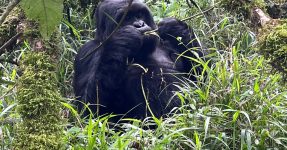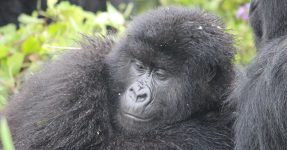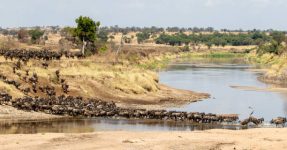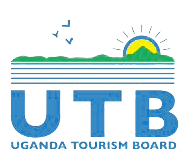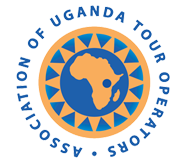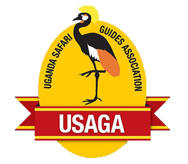Kanywani Gorilla Family in Bwindi: When planning a gorilla trekking adventure in Uganda, many individuals immediately think of Bwindi Impenetrable National Park. Located in the southwestern region of Uganda, this park borders the Democratic Republic of Congo. It is recognized as the largest protected habitat for mountain gorillas globally and is divided into four sectors: Rushaga, Nkuringo, Buhoma, and Ruhija. Each of these sectors is home to various gorilla families that visitors can encounter during their safaris.
To prepare for human interaction, these gorilla families undergo a habituation process, which typically lasts about two years in their natural habitat. Among the families that trekkers may encounter is the Kanywani Gorilla Family, located in the Buhoma sector, the northernmost part of the park. This family has recently been habituated and is available for visitors to observe during their safaris.
The Kanywani family consists of five members and has not yet been incorporated into the official gorilla booking system. Those interested in tracking this family should consult reputable tour operators for arrangements. It is known to be one of the more stable and peaceful families within the jungle.

What is the cost of a gorilla permit to visit the Kanywani Gorilla Family in Bwindi Impenetrable National Park?
To participate in a gorilla safari and visit the Kanywani family, travelers must obtain a gorilla trekking permit. This essential document is issued by the Uganda Wildlife Authority and can be purchased through licensed and trustworthy tour operators. The price for the gorilla trekking permit is set at 800 USD for foreign non-residents, 700 USD for foreign residents, 500 USD for other African nationals, and 300,000 UGX for East African residents. Travelers should book their permits in advance with tour operators to ensure availability during their safari.
What guidelines should travelers adhere to for a successful gorilla trekking experience?
As you prepare for gorilla trekking, travelers need to follow specific guidelines to enhance their experience. Key rules to consider include:
- Gorilla trekking begins early in the morning.
- Participants must be in good physical condition to track gorillas.
- Always pay attention to the instructions provided during the ranger-led orientation.
- Feeding gorillas in their natural habitat is strictly prohibited.
- Maintain a distance of 7 meters (approximately 10 feet) from the gorillas while observing them.
- Travelers are required to sanitize their hands and wear face masks before embarking on the trek.
- Littering within the park is not allowed.
- Avoid making direct eye contact with the gorillas.
- Carry a water bottle to stay hydrated throughout the trek.
- Proceed at your own pace during the journey.
- Secure a gorilla permit through a reputable and licensed tour operator.
- Remain in groups to prevent straying from the designated path.
- Refrain from using bright flash photography.
- Do not consume food in the vicinity of the gorillas.
Where to stay during gorilla trekking safaris in Bwindi Impenetrable National Park?
For travelers seeking a memorable gorilla trekking adventure, a common inquiry is about accommodation options during their stay. Bwindi Impenetrable National Park offers a variety of lodging facilities to choose from, catering to different budgets and preferences.
Accommodations range from budget-friendly to luxurious options, including Bakiga Lodge, Sanctuary Gorilla Lodge, Bwindi Lodge, Rushaga Haven Lodges, Rushaga Gorilla Camp, Kaara Lodge, Ride 4 Woman Community Lodge, Nkuringo Lodge, Bweza Gorilla Camp, and Lake Mutanda Lodge, among others. Travelers should make reservations in advance to ensure availability during their safari.
What should you bring for gorilla trekking safaris in Bwindi Impenetrable National Park?
Many travelers view gorilla tracking as a once-in-a-lifetime experience. To ensure a successful trek, it is essential to pack the following items:
- A water bottle for hydration.
- Clothing in muted colors.
- Sturdy hiking boots.
- Hiking poles.
- Rain jackets.
- Long-sleeved garments.
Is gorilla trekking a worthwhile experience?
This is a common question among those planning to participate in gorilla tours. Gorilla trekking is undoubtedly worthwhile, as it offers a unique opportunity to observe these magnificent primates in their natural habitat. The high cost associated with gorilla trekking reflects the significant conservation efforts aimed at preventing the extinction of these species.
What other activities can travelers enjoy in Bwindi Impenetrable National Park besides gorilla trekking?
During a safari to Bwindi for gorilla trekking, visitors can partake in various other activities. Some of these include:
Gorilla Habituation: This activity allows travelers to spend extended time with mountain gorillas in the park, specifically in the Rushaga sector. To participate, travelers must obtain a gorilla trekking permit, with only 12 habituation permits available each day. The cost for a gorilla habituation permit is approximately $1,500 for foreign non-residents, $800 for foreign residents, and 750,000 UGX for East African citizens.
Community Tours: While on a gorilla trekking safari in Bwindi Impenetrable National Park, community tours offer an opportunity to interact with residents living near the park, including the Batwa and Bakiga communities. Visitors can engage in activities such as cultural dances, forest walks, and sampling local cuisine.
How can one reach Bwindi Impenetrable National Park?
Access to Bwindi Impenetrable National Park is available via both road and air travel. For air travel, visitors can take domestic flights from Kajjansi Airstrip or Entebbe International Airport to nearby airstrips, such as Kihihi or Kisoro. Upon arrival, a road transfer will take you to the park.
For those opting for road travel, the journey from Entebbe to Kabale typically takes between 8 to 9 hours via the Kampala-Kabale highway. Alternatively, travelers can access the park from Kigali, which requires approximately 4 to 5 hours through either the Katuna or Cyanika border crossings.




